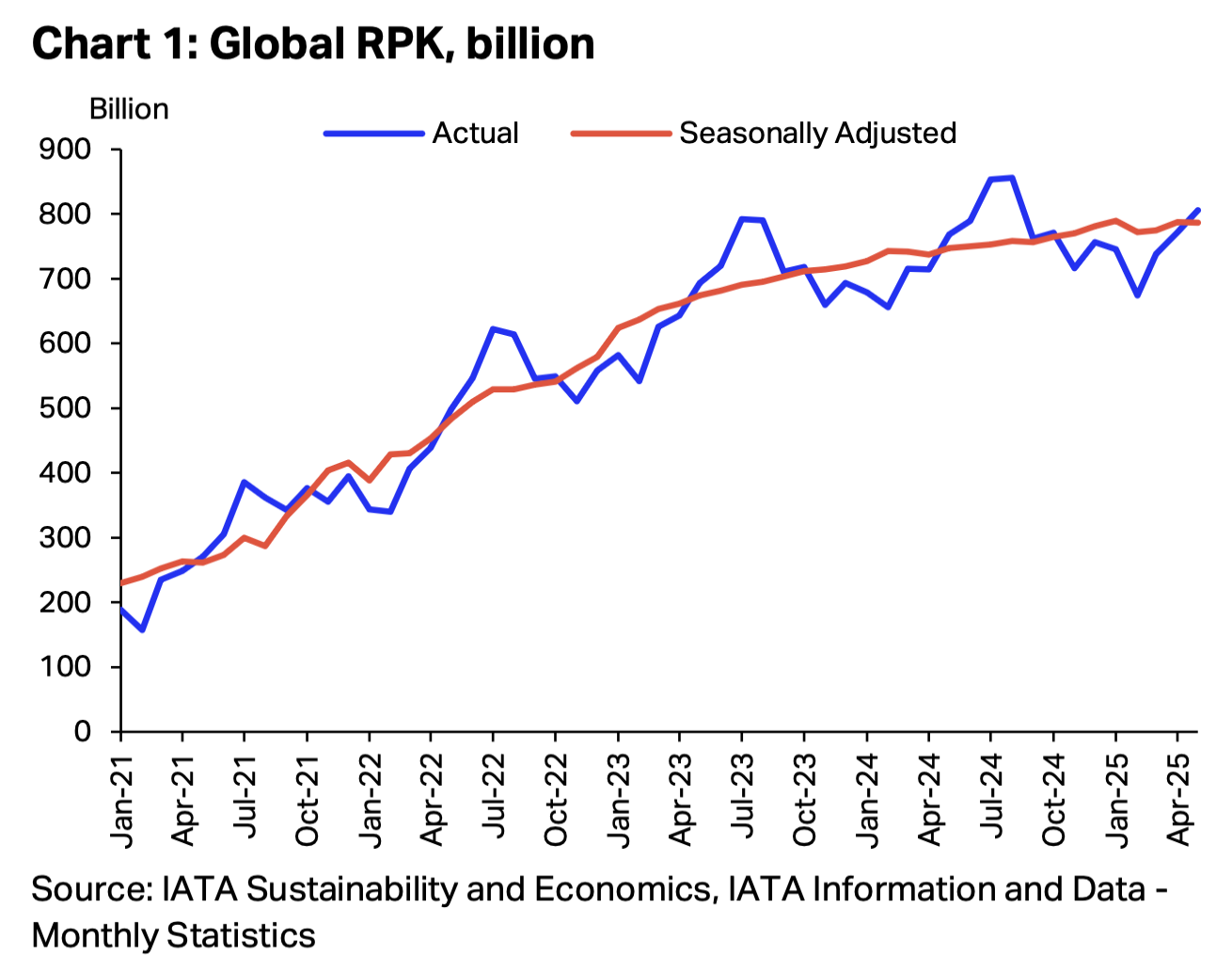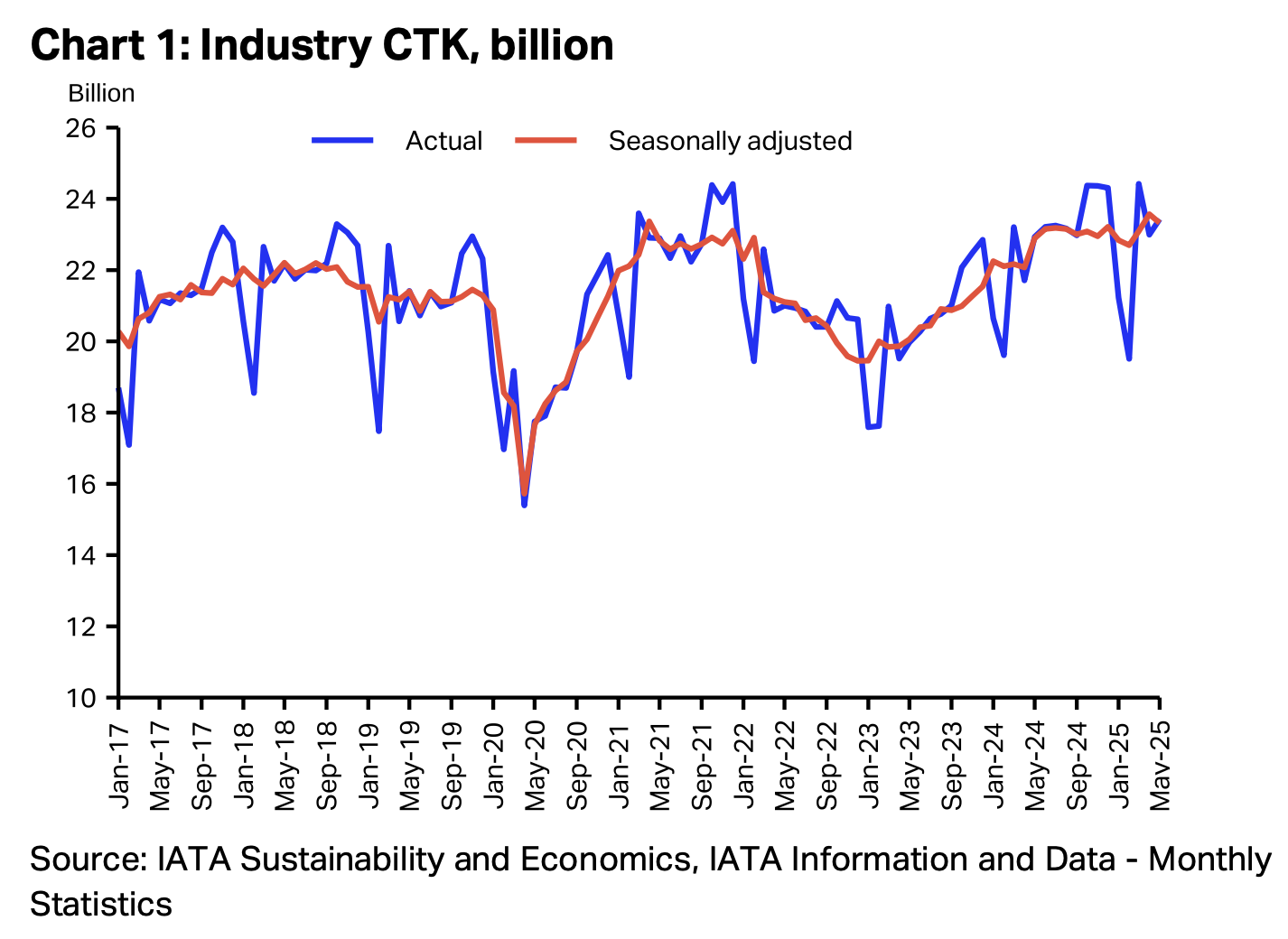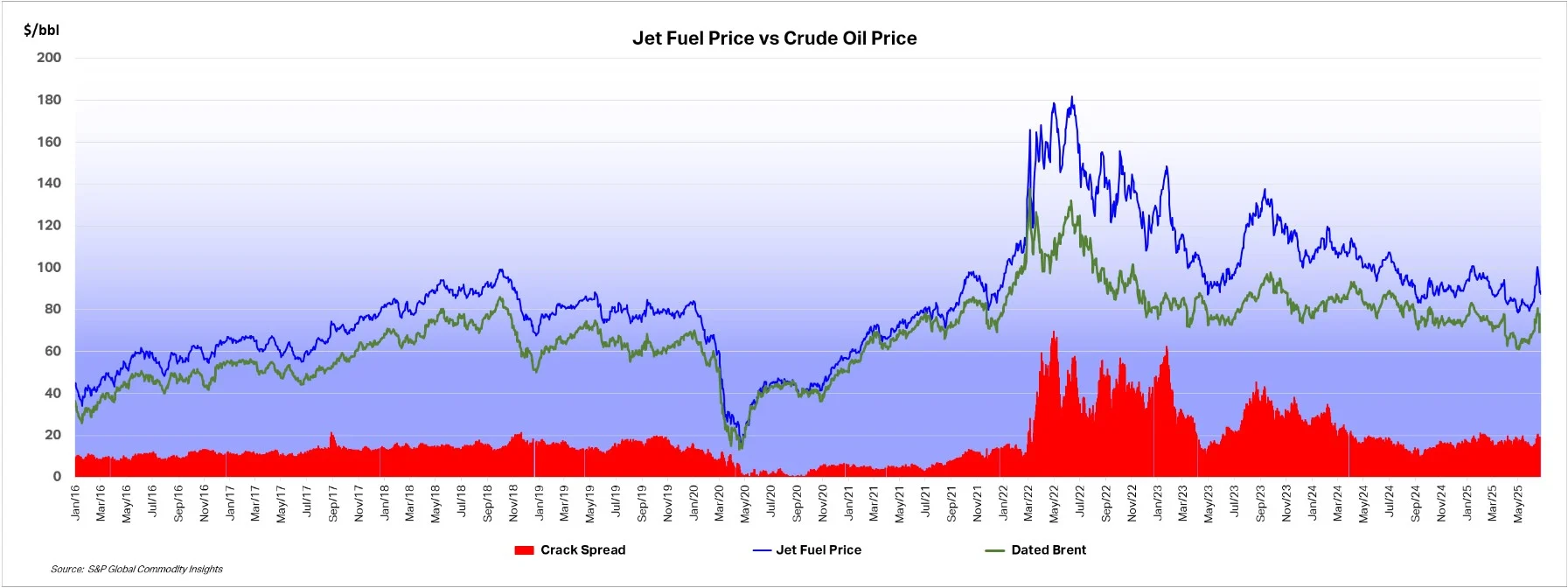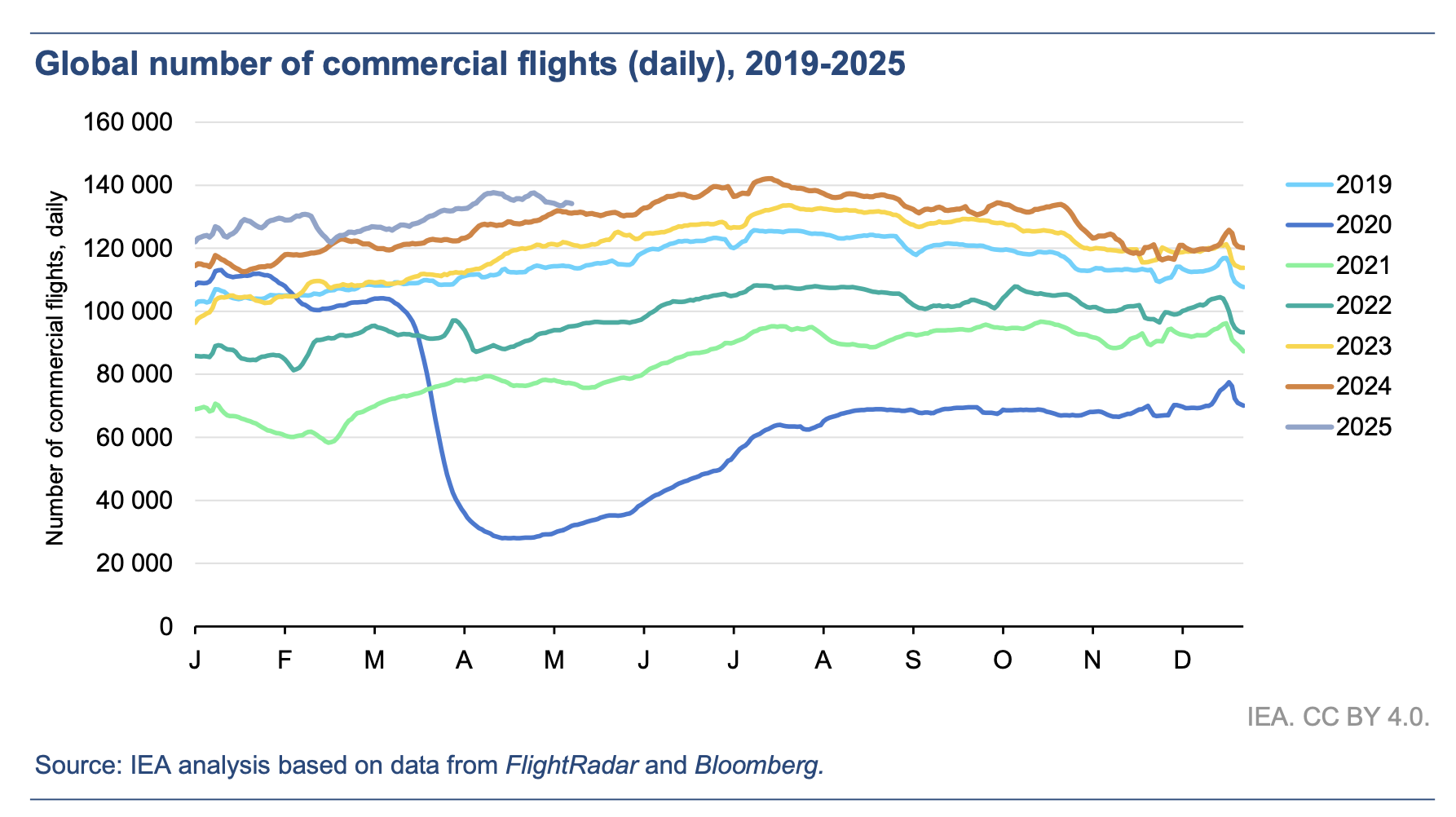Summary
Global passenger air traffic increased by 5.0% in May, approaching a new all-time high in 2025. Demand for air cargo climbed by 2.2%.
All major air traffic regions are growing, except for North America.
Jet fuel consumption is expected to reach a new all-time high in 2027 due to sluggish fleet modernization and minimal adoption of sustainable aviation fuel (SAF).
What is new?
- Air Passenger Market
- New data from IATA: Passenger traffic rose by 5.0% in May compared to the same month last year (measured in RPK = Revenue Passenger Kilometres).
- International passenger air traffic grew even more strongly, by 6.7%. Domestic air traffic grew by 2.1%.
- These figures are roughly in line with the trend. In the first five months of 2025, passenger air traffic expanded by an average of 5.8% (international +8.1%).
- Air transport is heading for a new all-time high, surpassing the previous pre-pandemic records set in 2019.
- All regions saw strong growth – with one exception: North America. Here, air traffic declined by 0.5% in May.

- Air Cargo Market
- Air cargo demand also expanded in May, growing by 2.2% year-on-year, which was stronger than expected.
- However, the slump following the announcement of new US import tariffs in April is still noticeable. Many shipments were brought forward to April (+5.8%).
- So far, growth in the period from January to May 2025 averages +3.2% compared to the previous year.
- North America is also an outlier in the cargo segment. The important Asia-North America corridor lost 10.7% year over year in May.

- Jet fuel demand
- The modernisation of aircraft fleets and the introduction of low-carbon fuels (SAF) is too sluggish to stop the rise in jet fuel demand.
- In addition to that, low oil prices are slowing down the pressure to invest. At the end of June, jet fuel prices stood at 90 $/b (708 $/t). This is about 10% less than a year ago and at a similar level to 2018 and 2019.
- This year jet fuel consumption is expected to rise by 0.13 mb/d to 7.7 mb/d, according to the latest IEA forecast.
- Note: The “Jet Fuel & Kerosene” product group largely, but not entirely, corresponds to jet fuel consumption in aviation. Kerosene is used for cooking in private households in some regions, and in small quantities for heating. However, these markets are relatively small and shrinking as kerosene is gradually being replaced by LPG or electricity.

Context & Comment
- Global jet fuel consumption is still below the record levels of 2019, according to new IEA estimates. However, the old highs of just under 7.9 mb/d are expected to be exceeded from 2027 onwards. A reversal of this trend is not yet in sight.
- Air transport remains the problem child of transport fuel decarbonisation. While it consumes “only” 7.5% of global oil supplies, it is the only rapidly growing sector alongside petrochemicals. The climate effects of contrails at high altitudes even double the GHG effect.
- The medium-term outlook is not encouraging either. For all major segments of fossil oil consumption, solutions are at least in sight in principle.
- Unlike other transportation sectors, aviation has no viable fuel alternatives on the horizon until new aircraft designs (hydrogen, fuel cells, batteries) become reality.

Your comment
- Please use our contact form
Sources and additional information
- Image 1: IATA
- Image 2: IATA
- Image 3: IATA based on S&P Global Data
- Image 4: IEA: Oil 2025, Paris June 2025
- Featured Image (Top): © Cathay Pacific
